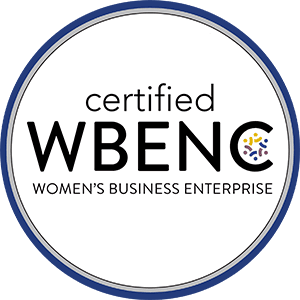Best Practices to Enhance or Kick-Start Your D&I Talent Acquisition Strategy
Jun 9th, 2022
It is hard to argue that companies who hire diverse people and promote diversity and inclusion practices are among the most successful in today's business landscape. Many companies have made great strides over the past years to enhance and expand their diversity and inclusion efforts by adding and or expanding D&I programs, announcing internal D&I ambassadors, and visible tracking their success on their websites. Talent Acquisition plays a vital role within these programs to help further diversity in the workforce. Let's quickly discuss best practices around D&I efforts for Talent Acquisition and how we can build an equitable process that speaks to a diverse range of talent.
David Pedulla outlines four best practices in his article, Diversity and Inclusion Efforts that Really Work, from the Harvard Business Review:
- Set goals, collect data, and examine change over time in comparison to other organizations
- Test for biased technology
- Ensure to increase the representation of minority groups in interviews, leadership, and conferences
- Involve managers from start to finish to get their buy-in
These four steps are a great starting point to evaluate, start, and ensure that your talent acquisition team is on the right track to an equitable recruiting process!
Examining and evaluating each recruiting step within the process is critical for a successful D&I strategy. It is not only about "getting enough diverse candidates"; the system should revolve around how the company designs processes, how they conduct interviews, and where potential factors that might deter underrepresented candidates still exist. It is essential to look at diverse and inclusive sourcing practices, sourcing for candidates who participate in different ethnic professional groups, student organizations, or professional affiliations, to name just a few ways to find and attract a wide range of diverse talent. It is also essential to train recruiters in the best interview and screening practices, that support D&I efforts.
Although diverse processes can drive unconscious bias, providing insights about unconscious bias and how it can affect an individual's decision can be a great initial start for an additional positive change.
Here are some tips to help aid and guide the process of diverse and inclusive recruitment:
- Offer a relocation stipend to ensure all candidates have the same possibilities to join the organization
- Allow candidates to schedule interviews flexibly and provide a calendar link for the candidate to book their appointments
- Re-asses your technology and trial if the system filters out specific resumes to ensure you get a truly diverse group of applicants
- How are you writing your job descriptions? Are they inclusive? Be wary of specific wordings and requirements that could exclude diverse populations
- Have hiring managers accept blind CVs
- Include hiring managers that represent a diverse population
These points only scratch the surface of what it takes to have an equitable recruiting process, which our unconscious bias still influences. However, using the techniques described above can genuinely enhance the way recruiters and hiring managers look at candidates to take the next step to integrate a diverse and inclusive talent acquisition strategy successfully.







